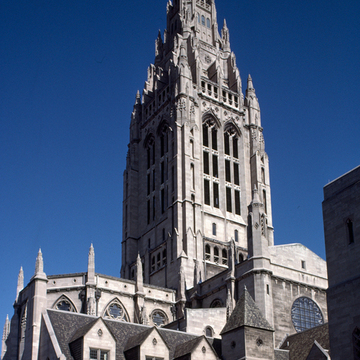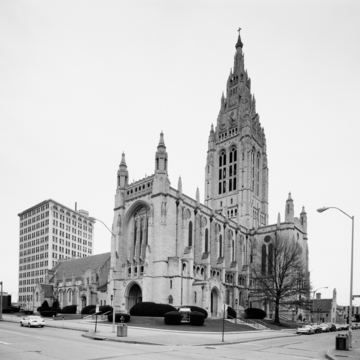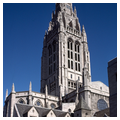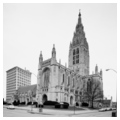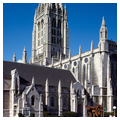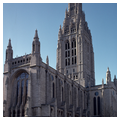This immense church is both visually and socially impressive. The congregation first assembled in a rural schoolhouse on this block in 1819, then built a succession of five different structures on the site. The wealthy congregation (the Negley and Mellon families were members) could afford a generous budget, so the church is luxuriously furnished with rib vaults, stained glass, a marble basrelief of the Last Supper, a towering reredos of ivory-colored stone, and an elaborately carved pulpit.
Although Ralph Adams Cram believed that no other church in the nation achieved such completeness of utility and art, the design lacks the élan of his earlier (though scarcely much bigger) St. John the Divine in New York City. East Liberty works best as part of the urban fabric: its Spanish Gothic Revival


